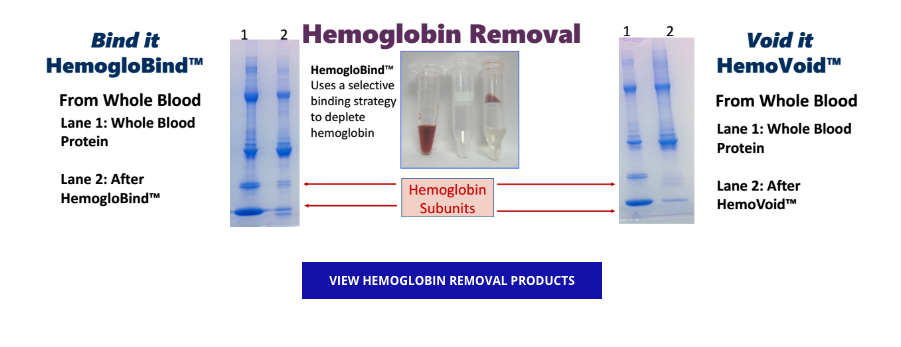
Diverse Depletion and Enrichment Technologies Enhance Simplicity and Efficiency of Obtaining Quality Proteomic Information
Combining two complementary enrichment strategies, BSG offers diverse technologies for researchers to selectively bind or enrich, in order to achieve the best results.
Background
Biotech Support Group develops cost effective and efficient sample prep methods essential for expanding proteomics into routine healthcare.
As one of the key BSG Advantages,
Enrichment/Depletion, BSG uniquely leads the way in proteomic sample prep by offering a choice of two strategies for proteome enrichment: either selectively binding high abundance, or choosing not to bind but rather enrich, to get the needed results.
We have many references and application reports highlighting this advantage and showing how it works. It has been extensively cited in journal articles such as “
Proteome Profiling in Lung Injury after Hematopoietic Stem Cell Transplantation,” as well as "In Silico Functional Networks Identified in Fish Nucleated Red Blood Cells by Means of Transcriptomic and Proteomic Profiling.”
The Challenge
Many proteomic enrichments use immuno-affinity. Some common limitations of this are high cost, regeneration requirements which can lead to diminishing performance, and a required marriage of species to antibody. Because of these potential complications, many researchers are looking for ways to enrich differently.
Hemoglobin can be very problematic in proteomic investigations due to its high abundance, and matrix interferences with common analytical platforms. In addition to the many inefficiencies and difficulties with separations technology, obtaining useful proteomic investigations can be problematic due to the fact that sample prep steps can be complicated themselves.
The Solution: Hemoglobind™ and HemoVoid™
The above error-prone disadvantages are largely avoided by developments surrounding BSG’s HemogloBind™ and HemoVoid™ Hemoglobin removal products.
HemogloBind™, binds hemoglobin, which is engineered for a high degree of selectivity that does not cross-react with most common serum components. And, HemoVoid™ works inversely, binding the underlying sub-proteome to the beads, and voiding Hemoglobin in the unbound fraction.
By using one of these two solutions, researchers will be able to improve efficiency and outcomes regardless of the analytical platform.
The Outcomes
Demonstrating the proteomic utility of removing hemoglobin from bronchoalveolar lavage fluid (BALF) samples tinged with blood, researchers note that the use of HemogloBind™ improved the depth of coverage by almost 2-fold.
The article states, "Hemoglobin removal improved protein identification to 845 proteins at 1% global FDR compared with 496 proteins with high-abundance protein depletion alone".
In addition, the researchers who utilized the HemoVoid™ kit were able to demonstrate its ability to enrich for the underlying sub-proteome from the cytosolic fraction of red cells.LC-MS/MS proteome profiling identified 1.770 proteins, where 724 proteins had more than 2 PSMs, proving its usefulness in proteomic investigations.
References
- Maneesh Bhargava, Kevin J. Viken, Sanjoy Dey, Michael S. Steinbach, Baolin Wu, Pratik D. Jagtap, LeeAnn Higgins, Angela Panoskaltsis-Mortari, Daniel J. Weisdorf, Vipin Kumar, Mukta Arora, Peter B. Bitterman,David H. Ingbar, Chris H. Wendt. "Proteome Profiling in Lung Injury after Hematopoietic Stem Cell Transplantation."Biol Blood Marrow Transplant 22 (2016) 1383-1390.
- Puente-Marin, Sara, et al. "In Silico Functional Networks Identified in Fish Nucleated Red Blood Cells by Means of Transcriptomic and Proteomic Profiling." Genes 9.4 (2018): 202.
|